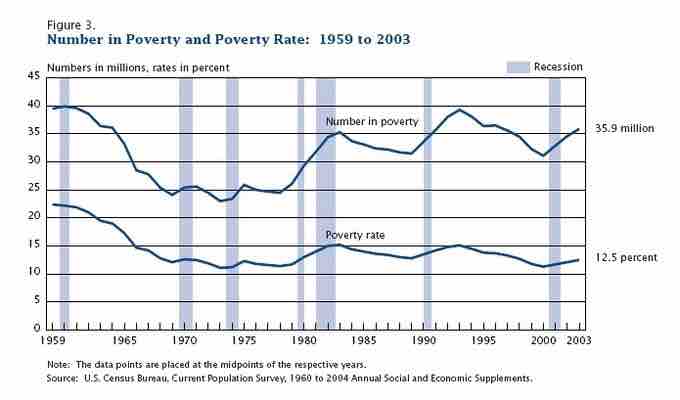In the United States, most social scientists agree that society is stratified into a hierarchical arrangement of social classes. Social classes are groupings of individuals in a hierarchy, usually based on wealth, educational attainment, occupation, income, and membership in a subculture or social network. Social class in the United States is a controversial topic; there have been many competing definitions, models, and even disagreements over its very existence. Many Americans believe in a simple three-class model that includes the rich or upper class, the middle class, and the poor or working class. More complex models that have been proposed by social scientists describe as many as a dozen class levels. Meanwhile, some scholars deny the very existence of discrete social classes in American society. In spite of this debate, most social scientists agree that in the United States, there is a social class structure in which people are hierarchically ranked.
Models of U.S. Social Classes
One social class model proposed by sociologists posits that there are six social classes in America. In this model, the upper class in America (3% of the population) is divided into the upper-upper class (1% of the U.S. population), earning hundreds of millions to billions of dollars in income per year, while the lower-upper class (2%) earns millions in annual income. The middle class (40%) is divided into the upper-middle class (14%, earning $76,000 or more per year) and the lower-middle class (26%, earning $46,000 to $75,000 annually). The working class (30%) earns $19,000 to $45,000. The lower class (27%) is divided into the working poor (13%, earning $9000 to $18,000) and the underclass (14%, earning under $9000). This model has gained traction as a tool for thinking about social classes in America, but it notably does not fully account for variations in status based on non-economic factors, such as education and occupational prestige. This critique is somewhat mitigated by the fact that income is often closely aligned with other indicators of status: Those with high incomes likely have substantial education, high-status occupations, and powerful social networks.
Another model for thinking about social class in the United States attributes the following general characteristics to each tier: The upper class has vast accumulated wealth and significant control over corporations and political institutions, and their privilege is usually inherited; the corporate elite is a class of high-salaried stockholders, such as CEOs, who do not necessarily have inherited privilege but have achieved high status through their careers; the upper middle class consists of highly educated salaried professionals whose occupations are held in high esteem, such as lawyers, engineers, and professors; the middle class is the most vaguely defined and largest social class, and is generally thought to include people in mid-level managerial positions or relatively low status professional positions, such as high school teachers and small business owners; the working class generally refers to those without college degrees who do unskilled service work, such as being a sales clerk or housecleaner, and it includes most people whose incomes fall below the poverty line.

U.S. Poverty Rate 1959-2009
This chart depicts the number of people living in poverty during each year from 1959-2003. The poverty rate corresponds to what proportion of Americans live in the lowest economic strata of the hierarchical class system.
Definition of Middle Class
Since the middle class is the largest yet most vaguely defined class, it is important to think about how people come to identify themselves as "middle class." Some people define middle class by income, whereas others are more concerned with values and job description. For example, one may define themselves as middle class if they needed to go to college to obtain their job, despite having a lower income than a blue-collar worker. Another person may believe that since he makes $100,000 a year (regardless of his job status), he is middle class. Most people define middle class in terms of income and values (such as education and religion).
Class Culture
Sociologists studying class distinctions since the 1970s have found that social classes each have unique cultural traits. The phenomenon, referred to as class culture, has been shown to have a strong influence on the mundane lives of people. Class culture is thought to affect everything from the manner in which people raise their children, to how they initiate and maintain romantic relationships, to the color in which they paint their houses. The overall tendency of individuals to associate mostly with those of equal standing as themselves has strengthened class differences. Because individuals' social networks tend to be within their own class, they acculturate to, or learn the values and behaviors of, their own class. Due to class mobility, in some cases, individuals may also acculturate to the culture of another class when ascending or descending in the social order. Nonetheless, the impact of class culture on the social hierarchy is significant.
Debates over the Existence and Significance of U.S. Social Classes
According to the logic of the American Dream, American society is meritocratic and class is achievement based. In other words, one's membership in a particular social class is based on their educational and career accomplishments, and class distinctions, therefore, are not rigid. Many sociologists dispute the existence of such class mobility and point to the ways in which social class is inherited.
Social theorists who dispute the existence of social classes in the United States tend to argue that society is stratified along a continuous gradation, rather than into delineated categories. In other words, there is inequality in America, with some people attaining higher status and higher standards of living than others. There is no clear place to draw the line separating one status group from the next.